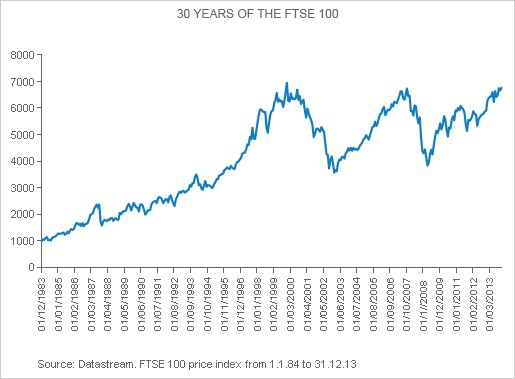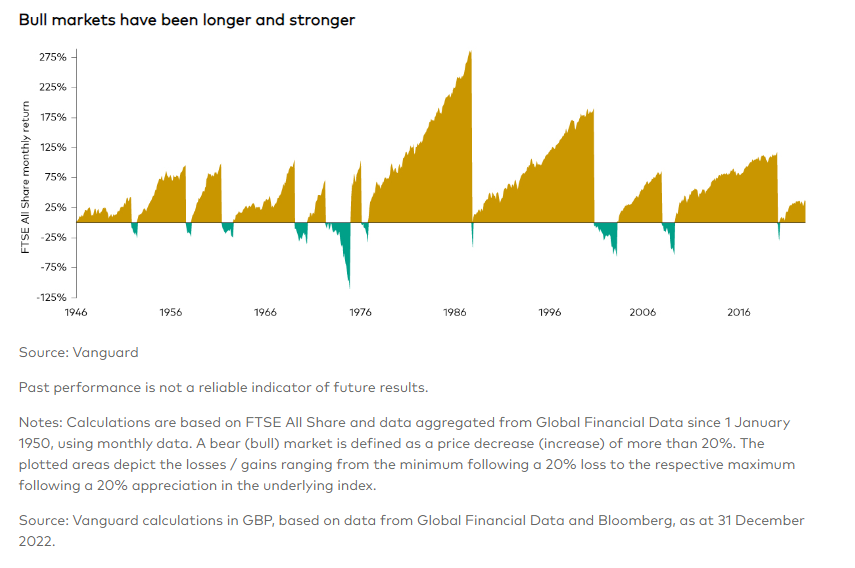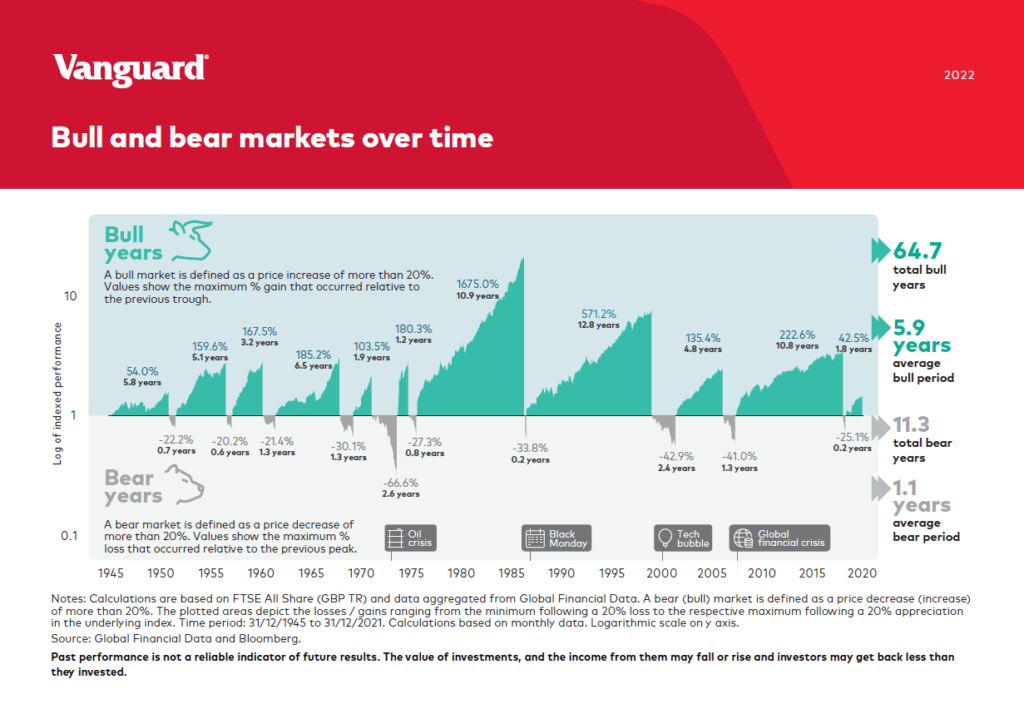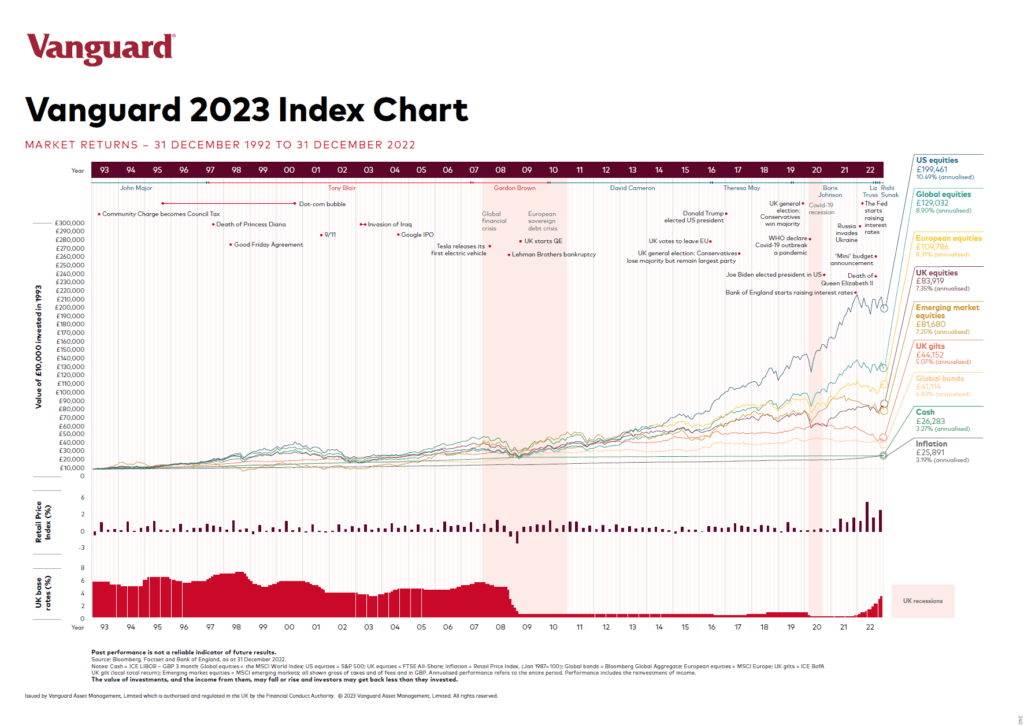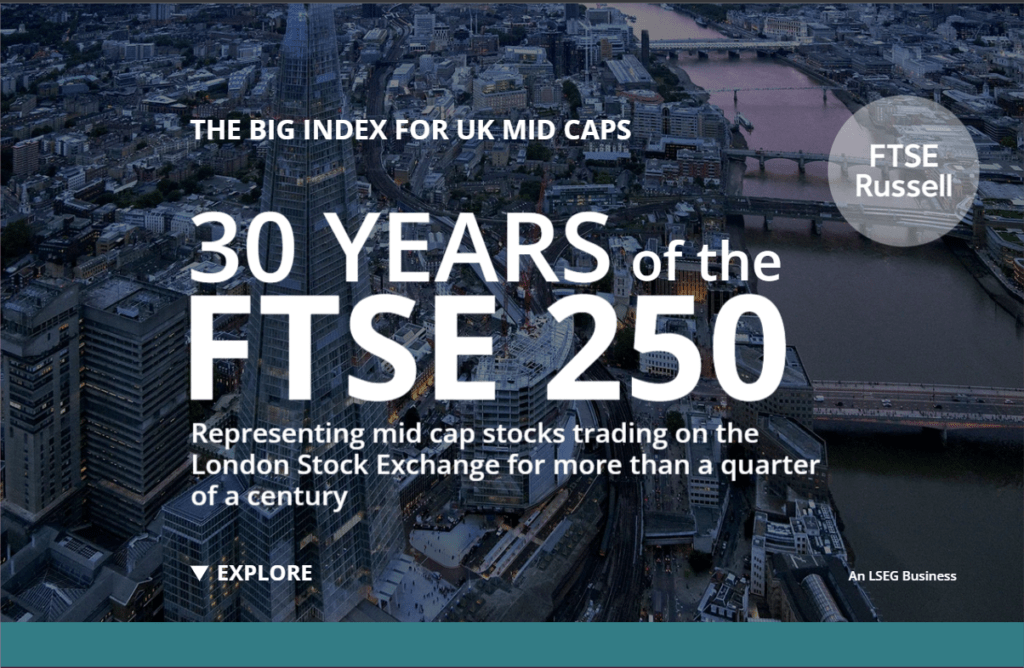The FTSE 100 turns thirty this year. With a base level of 1000, it was launched in January 1984 as a broader measure of the corporate British economy.
The chart below shows the performance of the index over the past 30 years:
Click to enlarge
Source: FTSE 100 turns thirty, Fidelity UK
On Friday the FTSE 100 closed at 6,829.30.
A few points of interest from the Fidelity article are listed below:
- In the first 17 years of its existence the FTSE had strong returns. But this could not be repeated in the next 13 years.
- The Footsie came just in time to capture the investing mood of a generation when wide-scale privatization of state industries led millions of Britons to own shares in the years that followed.
- By some measures the index does not represent the broad British economy. For example, Persimmon is the only UK home builder in the index whereas the next seven large builders are in the FTSE 250 index.
- The FTSE also suffers from “survivor bias” since failing companies are routinely booted out and replaced by successful firms.
- The original constituents of the FTSE 100 reflected Britain as a manufacturing powerhouse with long-established names such as BICC (electrical cables) Courtaulds (textiles) and TI Group (steel tubing) among them.
- Some of the original constituents such as BP (BP), Marks & Spencer(MAKSY) and Unilever(UL) are still in the index today.
The table below shows the original members of the FTSE 100 in 1984 and what happened to them:
Data Source: Motely Fool, UK
The history of the FTSE 100 constituent changes over the years can be found here.
Unlike the original FTSE, the current version is composed of fewer manufacturing firms.The FTSE 100 currently is dominated by banking, mining and energy firms.Today it is a market-capitalisation weighted index of UK-listed blue chip companies measuring the performance of the 100 largest companies traded on the London Stock Exchange that pass screening for size and liquidity.
The dividend yield of the index stood 3.46% at the end of 2013 (in local currency terms) and the top 10 constituents accounted for about 43% of the index market capitalization.
The Top Five Constituents of the Index are listed below with their current dividend yields:
1.Company: HSBC Holdings (HBC)
Current Dividend Yield: 4.31%
Sector: Banking
2.Company:Vodafone Group (VOD)
Current Dividend Yield: 4.05%
Sector: Telecom
3.Company: BP Plc (BP)
Current Dividend Yield: 4.54%
Sector:Oil & Gas Producers
4.Company: Royal Dutch Shell A (RDS-A)
Current Dividend Yield: 4.29%
Sector:Oil & Gas Producers
5.Company: GlaxoSmithKline (GSK)
Current Dividend Yield: 4.38%
Sector:Pharmaceuticals & Biotechnology
The full list of FTSE 100 can be found here.
Note: Dividend yields noted above are as of Jan 17, 2014. Data is known to be accurate from sources used.Please use your own due diligence before making any investment decisions.
Source: FTSE
The iShares MSCI United Kingdom ETF (EWU) which tracks the MSCI United Kingdom Index gives exposure to some of the large British firms. It has a 12-month yield of 2.40%.
Disclosure: No Positions
Update:
The changing face of the FTSE 100, CityWire UK
